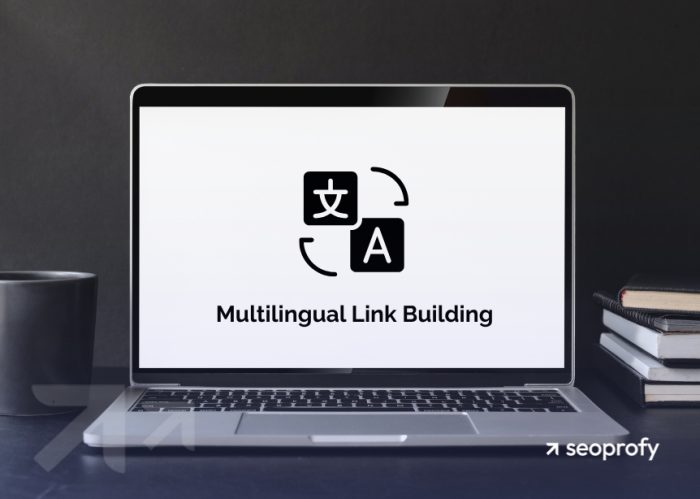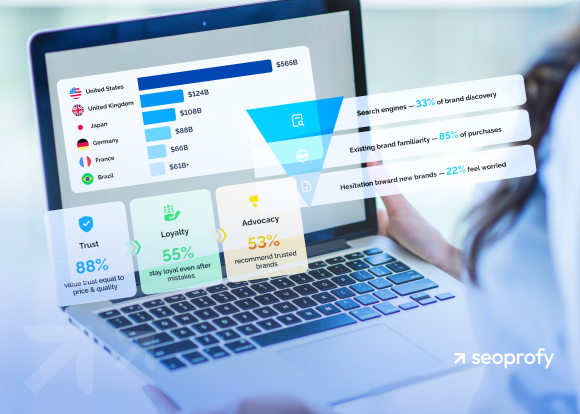Multilingual link building is the process of getting backlinks from websites in multiple languages. It matters if you want better rankings in international markets and want your brand to feel familiar and local to people in each region.
However, international link building isn’t easy: you need outreach contacts in each country, time to vet local platforms, and sometimes even trusted contractors who understand the market. Add to that cultural differences, language barriers, and local SEO rules that rarely match what you’re used to. In this guide, we’ll break down multilingual link building best practices step by step, so you can avoid common mistakes and build links that actually help your rankings abroad.
- Multilingual link building helps you rank in local search results by earning backlinks from region-specific websites in the target language.
- Strong international backlinks depend on language match, local authority, and relevance to the audience in each region.
- Tracking performance by country, language, and anchor is essential to scale and improve your multilingual strategy.
- Brands that localize both content and outreach see stronger SEO growth across new markets.
Why Multilingual Link Building Matters in 2026
So, we’ve already established that multilingual link building means earning backlinks from websites in other languages and markets. Unlike general link building, this approach requires you to understand how each local market behaves: how people search, which platforms they trust, and what kind of content local sites are willing to link to.
Here’s how international link building compares to standard single-language link building:
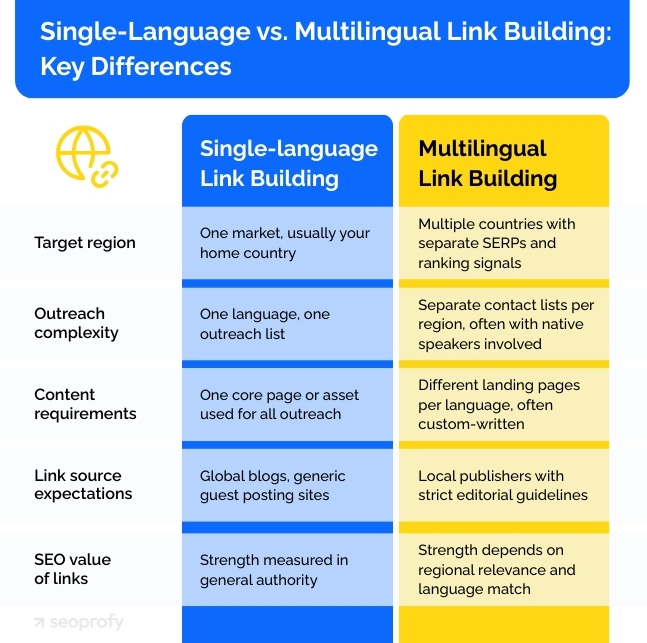
Over the last few years, SEO has gone fully global. Search engines like Google, Bing, and even region-specific ones like Naver and Baidu have improved in understanding local context. That means brands can no longer rely on English-only link building to rank internationally, especially as competition grows and users expect region-specific relevance.
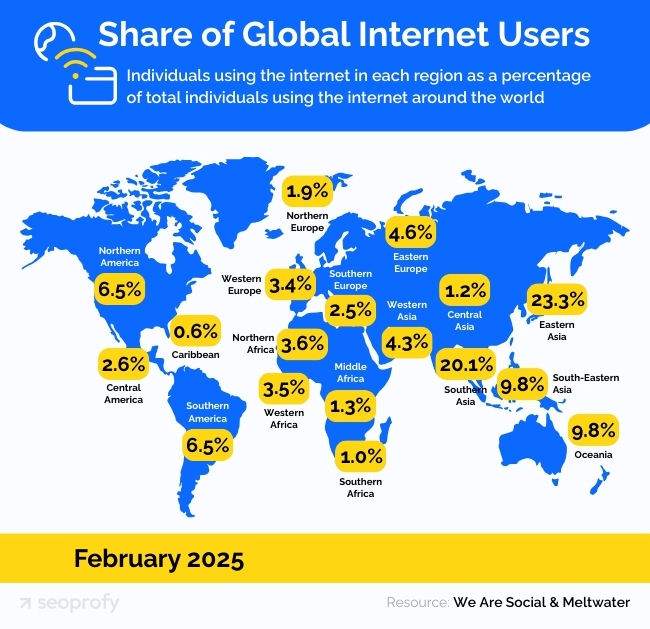
So who needs international link building?
- Ecommerce brands expanding into new countries or launching regional storefronts.
- SaaS companies offering tools across Europe, LATAM, or Asia and aiming to compete with local alternatives.
- B2B businesses entering international markets and needing visibility in country-specific SERPs.
What can strong link building strategies actually do for your SEO across different markets? Time to look at the details.
What is the SEO Impact of Multilingual Backlinks?
We’ve already said that multilingual backlinks help you rank better internationally, but we haven’t yet explained why. Let’s look at what actually makes them so effective.
When search engines evaluate your site for search engine rankings in other countries, they look beyond domain authority. Search engines also assess where your links come from and whether the context makes sense for a local user. Here’s what influences the value of a multilingual backlink:
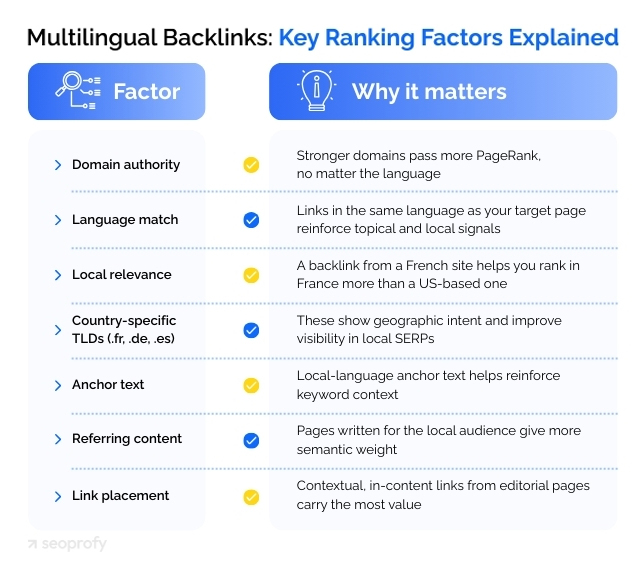
Search engines use these combined signals to decide which sites are truly relevant in a specific region.
A backlink from a respected German blog tells Google.de that your content deserves to show up for German users. That kind of signal is far more powerful than a generic link from an unrelated English-language page. This becomes especially important if you’re using localized domains or subdirectories.
We can see how this works in practice by looking at Canva’s localized French content under www.canva.com/fr_fr/. Instead of launching separate domains, Canva uses language-specific subfolders and builds dedicated local pages for each region.
For the French market, this includes tailored landing pages, regionally adapted content, and backlinks from thousands of .fr domains. Many of these links point directly to Canva’s /fr pages, often embedded naturally inside editorial content on French-language websites.

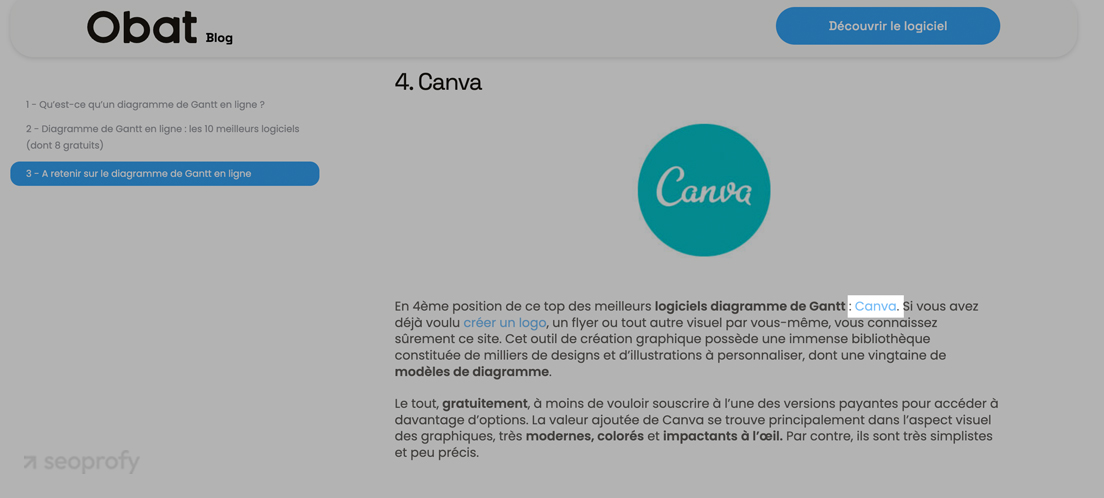
Google indexes /fr_fr/ as part of the main Canva site, but it treats the content as a separate language variant thanks to signals like hreflang and on-page language cues. That allows French-language backlinks to strengthen the /fr_fr/ section specifically, improving its visibility in regional search engines.
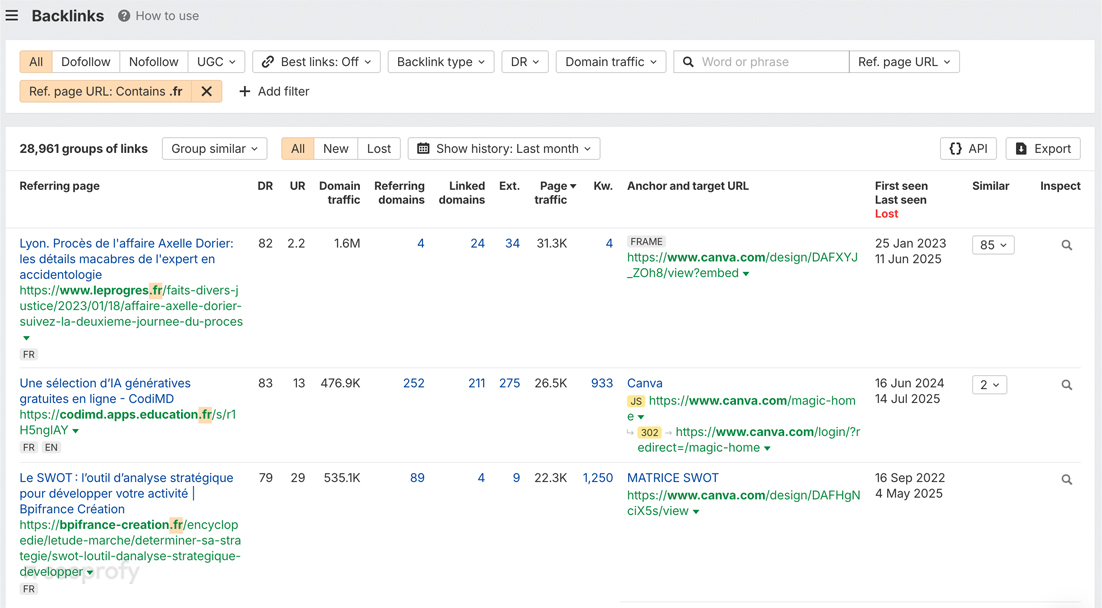
So, this localized link strategy works hand in hand with the site’s growing presence in French search. According to Ahrefs, the /fr_fr section now ranks for over 431K keywords and brings in 10.8 million organic visits per month, almost 90% of them are from France.

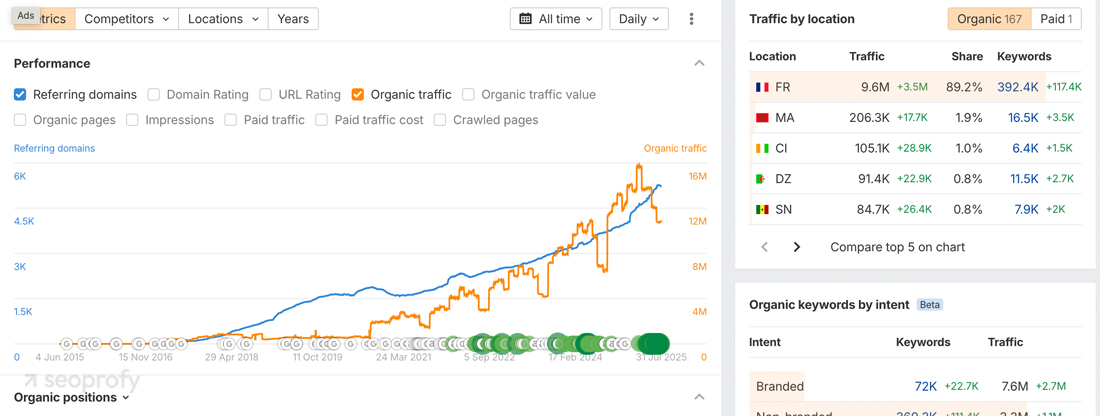
As you can see, multilingual backlinks do work. But how do you make them work for your business? That’s exactly what this guide is here to explain.
Benefits of a Multilingual Link Building Service
As you’ve probably realized by now, link building is not a simple task. At this stage, you have two options: build your own team or partner with an agency that already knows how to get results.
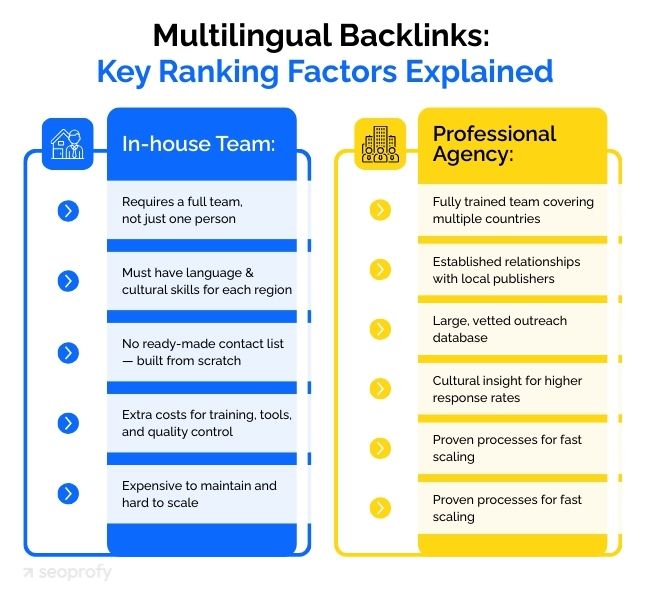
In-house Team
Hiring one person to “handle link building” won’t be enough. To scale across countries, you need a coordinated team. So, you’ll need link builders who speak the local language, know how to pitch to regional publishers, and understand what kind of content works in that ecosystem. And they rarely come with a ready-made contact list, most outreach databases are built from scratch.
Beyond hiring, you also have to think about training, tool stacks, quality control, and campaign management. Maintaining an in-house link building operation is expensive, and for multilingual outreach, the complexity multiplies quickly.
Professional Agency
When you outsource link building to an agency, you avoid all the bottlenecks mentioned earlier. Here’s what a specialized link building service brings to the table:
- A fully trained team already covering multiple regions and languages
- Existing relationships with local publishers that speed up outreach
- A large, vetted outreach database built over years of experience
- Cultural insight that improves response rates and link placements
- Established processes that allow for fast, efficient scaling
- Predictable costs, often lower than building an internal team
- Consistent quality based on proven systems and deliverables
If you decide to work with professional link building services, we’ve got you covered. But if you prefer to build everything in-house, get ready for a long and resource-heavy journey.
Either way, you need to understand how the process really works. And that’s exactly what comes next: our top link building best practices, tested and proven.
Technical SEO for Multilingual Sites
Before you start link building, ensure your site is technically ready; without proper indexing and localization signals, search engines may not recognize your regional pages, and any backlinks pointing to them won’t pass full SEO value.
Here’s what needs to be in place:
- Localized site versions: Use clear subfolders like /fr/ or /de/, or separate country domains. Don’t rely on auto-translation or location-based content swapping.
- Correct hreflang setup: This tells search engines which version to show in which region and avoids cannibalization between language variants.
- Translated meta tags: Titles and descriptions should be written in the target language, with keywords and tone adapted to each market.
- Language-specific sitemaps: Help crawlers discover and prioritize localized pages, especially in deep site structures that are common in ecommerce link building.
- Clean URL structure: Keep slugs consistent, readable, and aligned with the page language.
- Global performance: Use a CDN to keep loading speeds fast across all regions.
How to Do Multilingual Link Building
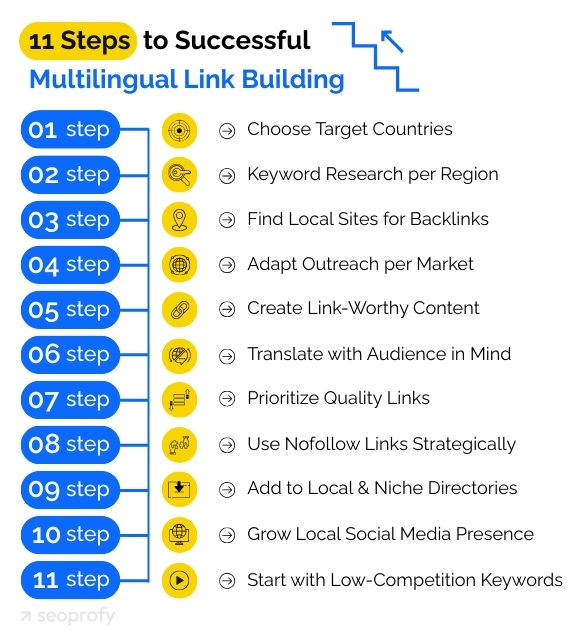
Once your site is technically ready, it is time to build links. But you cannot jump straight into outreach. International link building needs a structured, region-specific approach. Here is how to do it step by step.
Step 1: Choose Your Target Countries
The basics of multilingual link building are analyzing where your site already has visibility or potential. Use Google Search Console to see which countries show impressions for your pages.
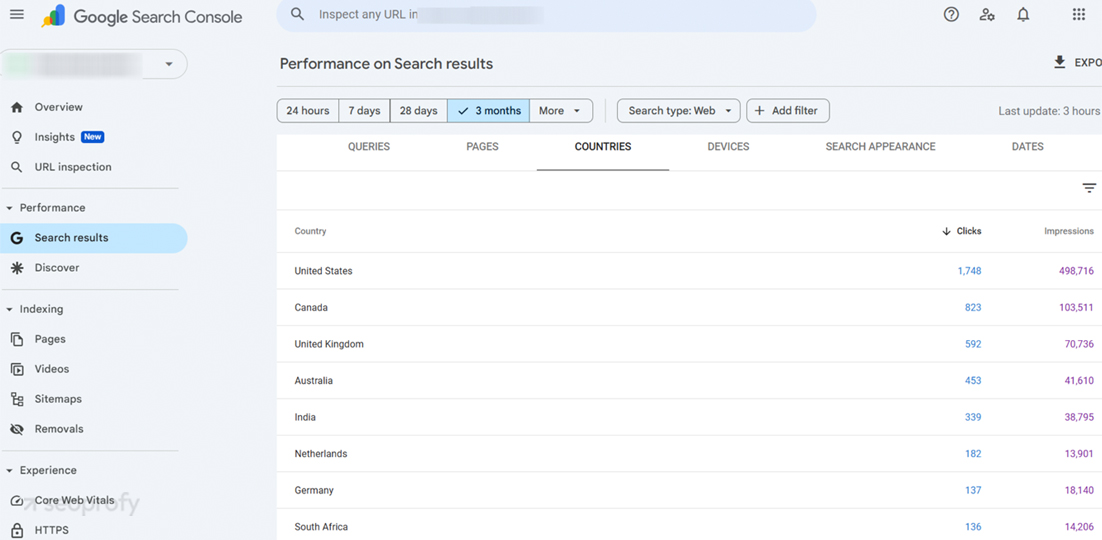
In Ahrefs, check which pages already rank or have backlinks from specific regions. This helps you pick markets that are easier to activate. Do not try to target everything at once. Start with one or two countries where you have some traction.
Step 2: Do Keyword Research for Each Region
Search behavior varies by country, even within the same language. Use local settings in Ahrefs, Semrush, or Google Keyword Planner to identify what topics people search for in each market. This helps you prioritize which pages to promote with links.
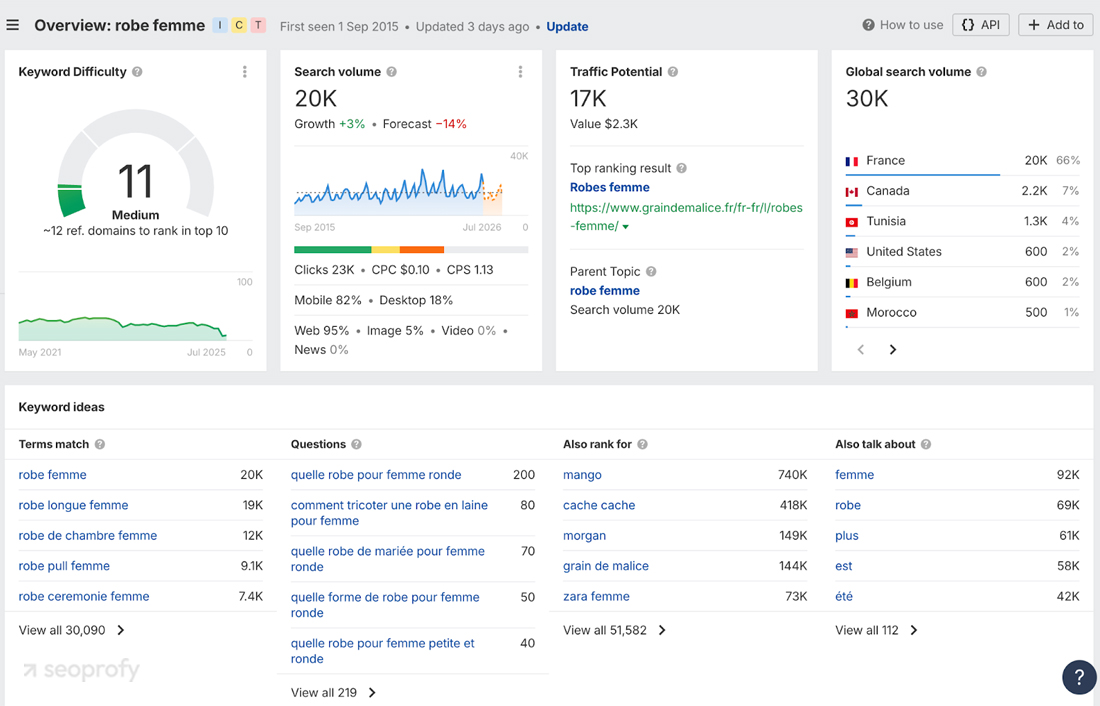
Also check anchor trends in Ahrefs by filtering referring anchors by country. That way, you will use natural phrasing that matches local usage.
Step 3: Find Local Sites For Backlinks
Build a list of regional blogs, media sites, directories, and niche resources. Look for native-language content, steady traffic from the target country, and active editorial policies. The best links come from sources that fit naturally into the local content environment.
Step 4: Adapt Outreach Per Market
For example, a casual outreach email offering a guest post might get positive replies from Spanish bloggers, but in Japan the same tone can be seen as unprofessional. In that case, the email should be rewritten in Japanese with a more formal greeting, clear credentials, and a more structured proposal.
Work with native speakers whenever possible to improve your response rate and avoid cultural missteps.
Step 5: Create Link-Worthy Content First
Before outreach starts, you need content that people actually want to link to. What makes content linkable across markets?
Formats that provide unique value tend to perform best:
- Original research
- Tools
- Templates
- Data visualizations
- Localized case studies with real numbers, etc.
Take Adobe’s AI and Digital Trends Report as an example. They didn’t just publish it in English. The report underwent full localization SEO work, including a German version with fully translated content and visuals tailored to the local market.
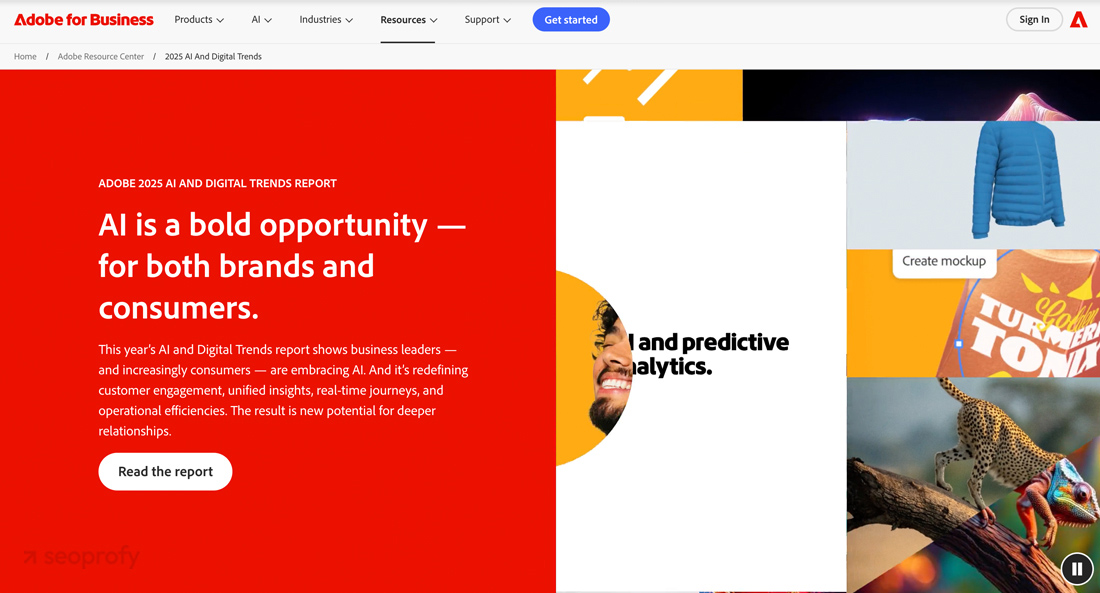
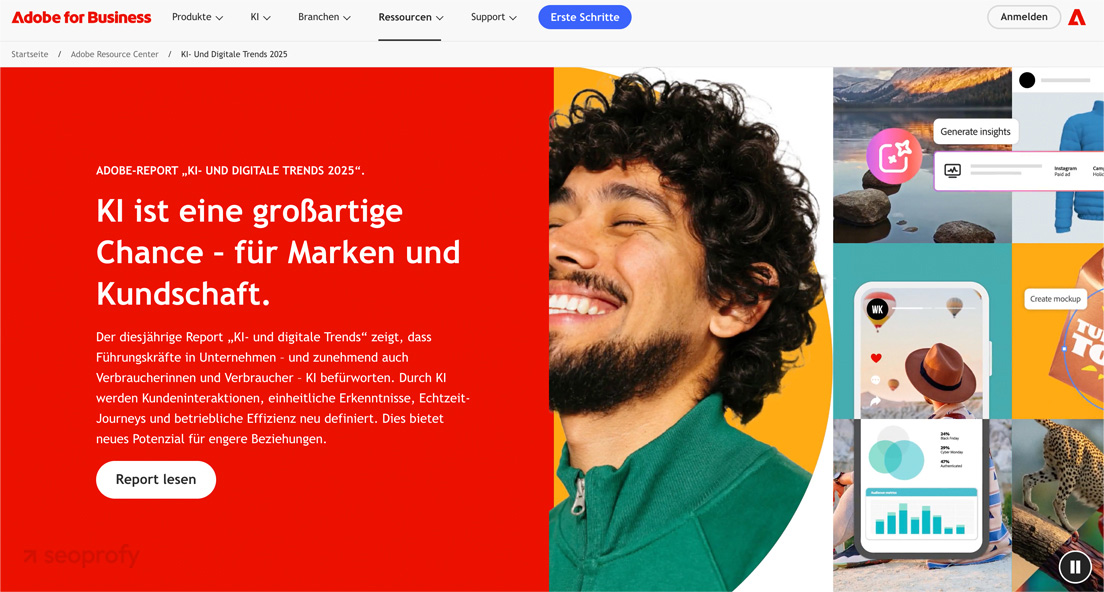
The English version has earned over 7,000 backlinks. The German version has picked up 175 local backlinks.
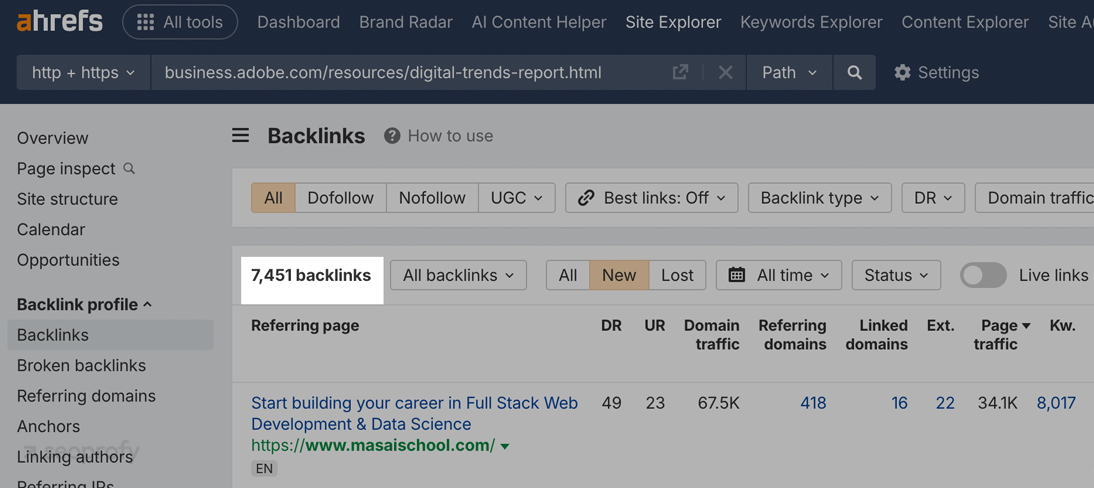
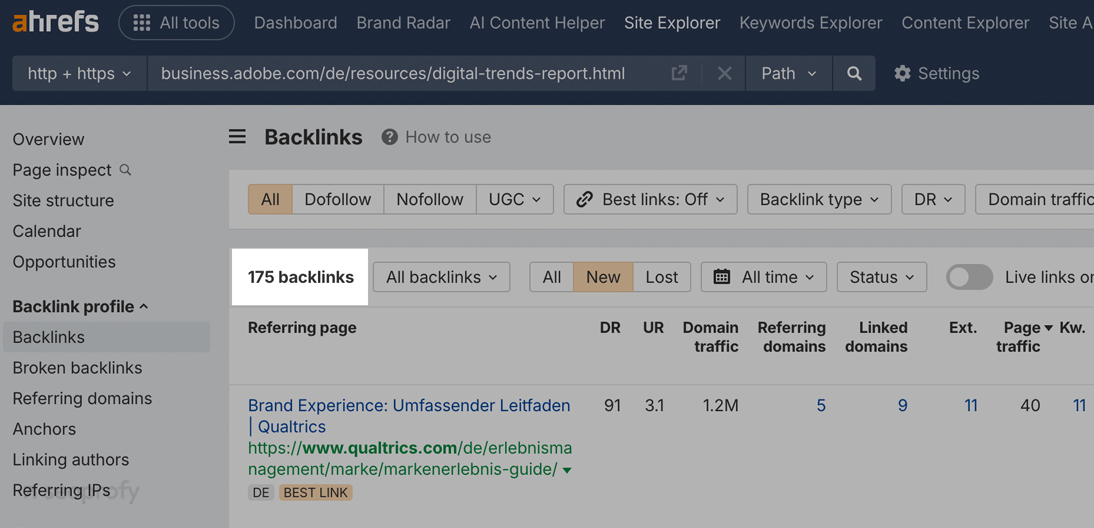
Strong backlinks follow strong relevance. If your content is useful, local, and specific, the links come naturally.
Step 6: Translate Content with Your Audience in Mind
Direct translation is not enough. To earn links, your content must sound native and relevant. That means working with local professionals who can adapt tone, structure, and references to the market.
At SeoProfy, for example, our content team includes editors who specialize in language and tone differences across regions. Every localized piece goes through multiple rounds of editing to make sure it reads naturally for the target audience.
The process is complex enough that even the biggest companies sometimes make mistakes. A well-known example is Apple’s Mother’s Day campaign in China.
The original English message was “A gift Mom will love opening. Again and again.” It played on the idea of opening a gift and repeatedly opening the iPad itself. This double meaning was lost in the mainland Chinese translation. The phrase became “让妈妈开心的礼物,开了又开,” which roughly means “a gift that makes Mom happy, opened again and again.”
Users on Apple’s official forum openly criticized the copy. One of them pointed out that the Hong Kong and Taiwan versions were much closer to the original intent. They preserved the warmth and emotional tone instead of translating the sentence word for word.
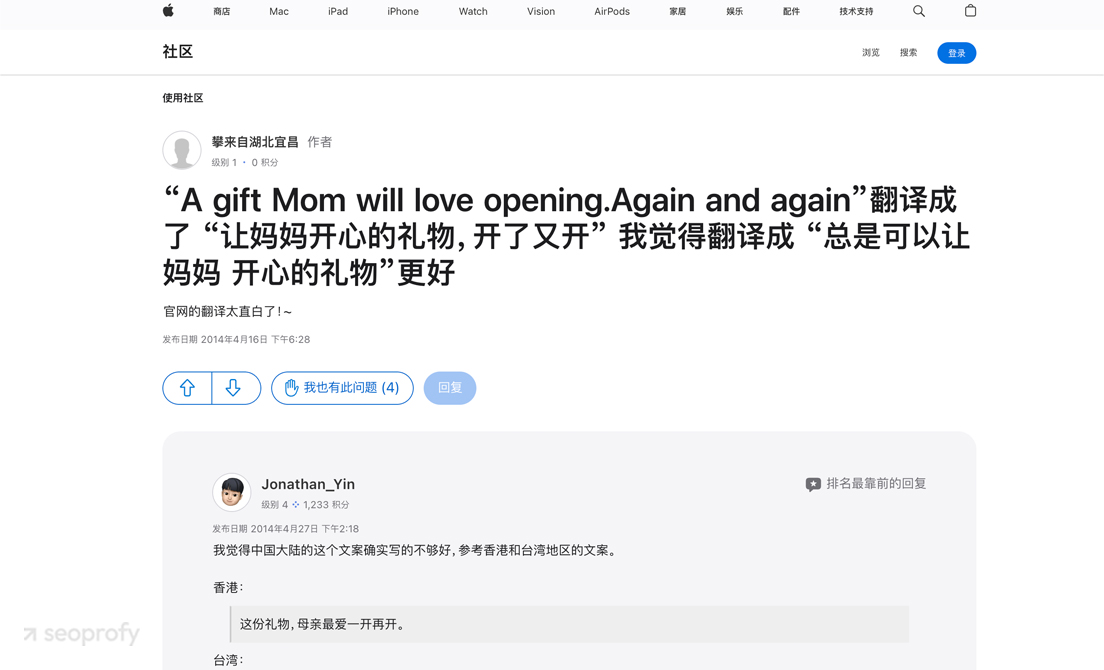
Poor translation signals low effort. Native-level adaptation shows quality, and that is what publishers link to.
Step 7: Prioritize Quality Links That Drive Results
Not all backlinks help your multilingual SEO. Some do nothing. Others can even hurt.
To build links that actually improve rankings, you need to know how to tell good from bad. Here are the key factors to check before you spend time or money on any placement:
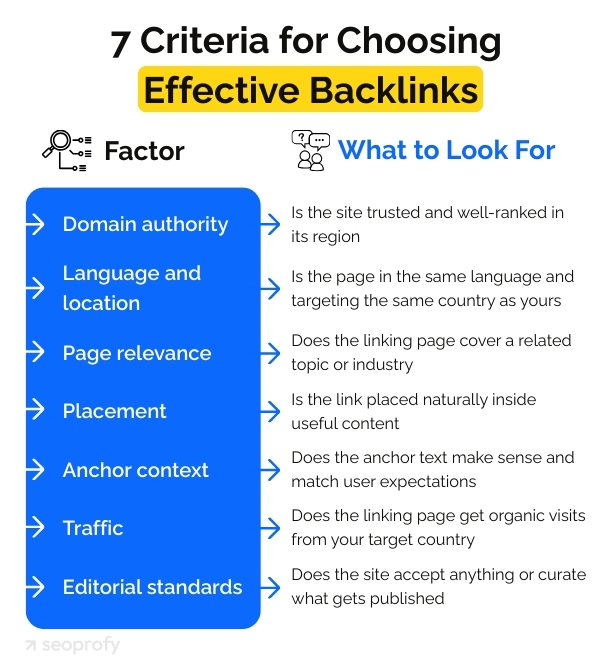
Step 8: Nofollow Links: Still Worth Your Time
Yes, nofollow links do not pass PageRank, but that does not make them useless. When placed on the right page, in the right language, and pointing to your localized content, they still do their job. Maybe not through direct SEO value, but through visibility and reach.
First, they drive traffic. Second, Google still treats them as part of your backlink profile, especially if the source is trusted. Third, they help get new localized pages indexed faster.
Here is an example. Canva received a link from blog.hubspot.fr. The article is in French, the link is inside the content, and it leads to a French-language page on canva.com.

It is nofollow, but it reaches the right audience. That means editors, marketers, and publishers in France will see it. Some of them may later link to it with dofollow links. This kind of exposure matters.
Step 9: Add Your Site to Local and Niche Directories
Local directories are a simple way to build relevant, country-level links early on. They rarely give strong SEO value on their own, but they help with indexing, local trust, and building a natural link profile.
Here are three types worth using:
- Local business directories: These are country-specific platforms like pagesjaunes.fr (France) or gelbeseiten.de (Germany). They show search engines that your brand exists and operates in the region. To get listed, you usually fill out a profile with a local address, business description, and link.
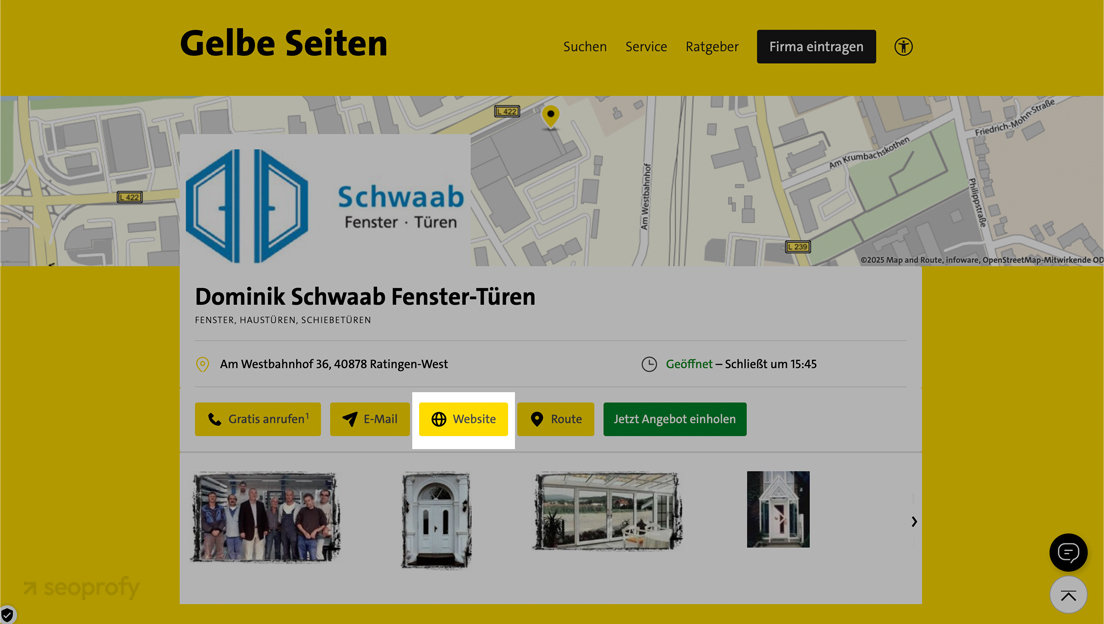
- Language-specific directories: These group sites by language, not location. For example, a Spanish-language tech directory may cover Latin America and Spain. Useful when targeting local users across multiple countries with the same language. Submission usually happens through a form and a short content review.
- Industry-specific directories: These focus on your niche, like SaaS tools, law firms, or ecommerce platforms. They bring in relevant traffic and can attract links from journalists or bloggers who use directories for research. Some are free; others require approval or payment.
Use directories as a base layer. Focus on quality, not quantity. Choose platforms that are actually used in the region you want to reach.
Step 10: Grow Your Presence on Global Social Media Platforms
Localized social media profiles help your brand feel present in the market. You do not need millions of followers. What matters is language, context, and regular activity.
Start by creating separate profiles for key regions. Post in the local language, respond to comments, and share content that speaks to that specific audience.
One brand that does this well is Notion. When entering Korea and Japan, they launched separate X (Twitter) accounts fully localized for each market. These accounts are now mentioned by local tech blogs and recommended by creators without direct outreach.
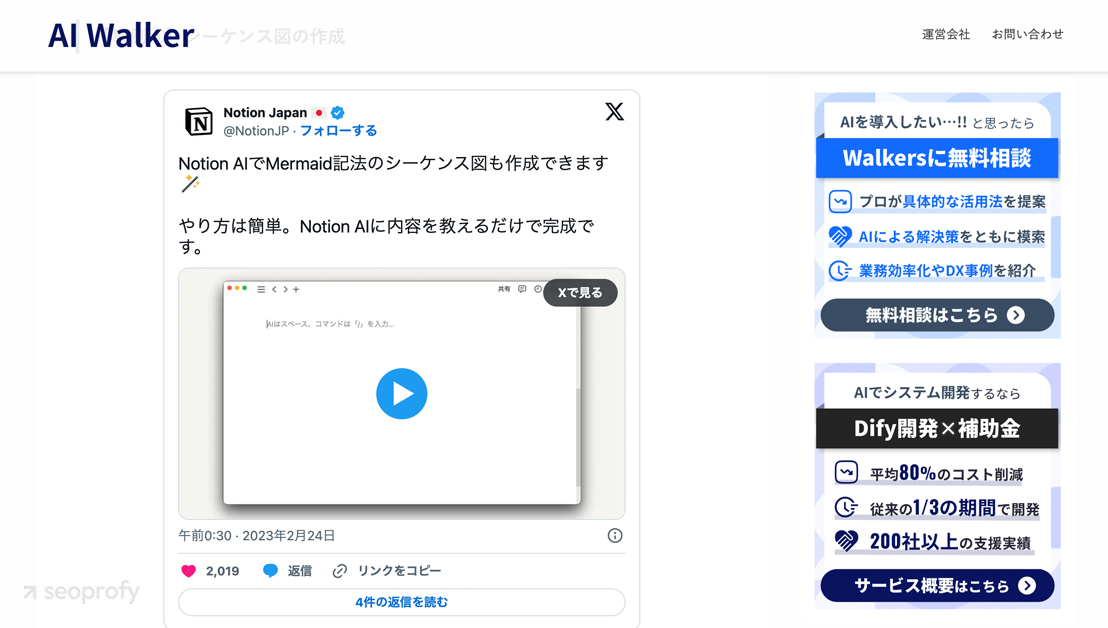
This kind of visibility supports link building. Publishers are more likely to link to brands they recognize. And when outreach happens, your profile looks real — because it is.
Step 11: Start Small: Target Less Competitive Keywords First
When entering a new market, it makes sense to begin with realistic goals. Trying to rank for the most competitive keywords right away often leads to wasted time and no Google search results. You first need to gain some visibility and trust in that language and region.
The best way to do that is by targeting lower-difficulty relevant keywords. These are easier to rank for, attract early traffic, and help your localized pages start building links.
Here is how to find them in Ahrefs:
- Open Keywords Explorer
- Choose the country you want to target
- Enter a broad topic related to your product or service
- Filter by Keyword Difficulty below 20
- Set Search Volume to show only keywords with at least 50 or 100 monthly searches
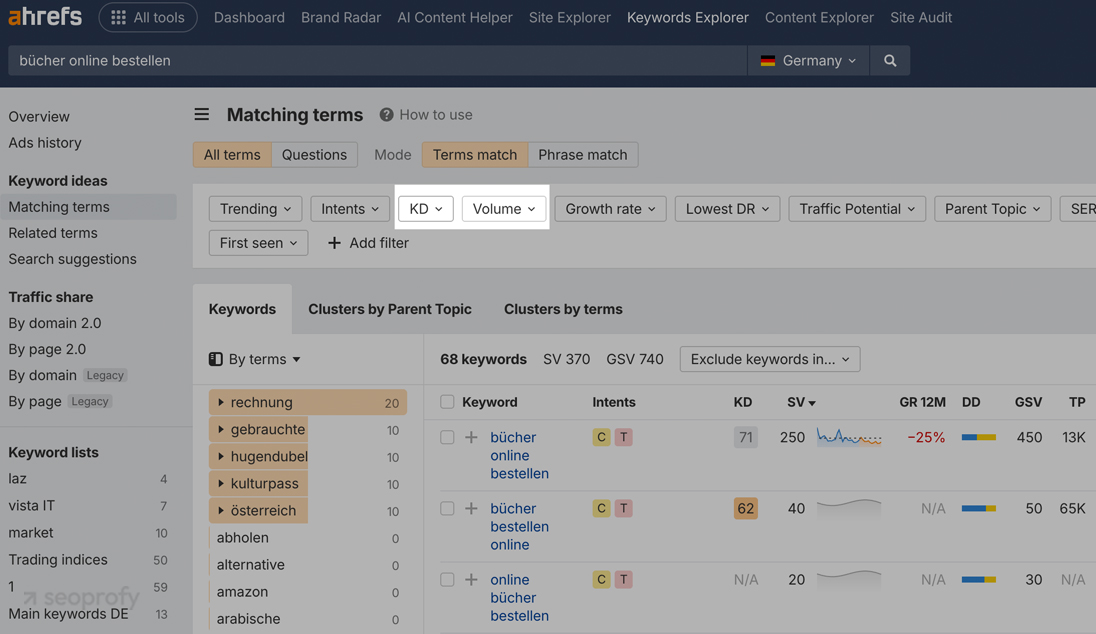
- Scan the results for phrases that match your content and make sense in local context
Pick keywords where you can meet the search intent with the content you already have or can easily localize. Once you start ranking for smaller terms, it becomes much easier to move up to more competitive ones.
Tools to Make Multilingual Link Building Easier
So, international link building requires data. To choose the right countries, keywords, content formats, and outreach targets, you need tools that help you analyze, localize, and scale. We organized the most useful ones into a single list so you can focus on the work, not on searching for where to start.
| Ahrefs | Use Ahrefs in link building for multilingual websites to find link opportunities by country and language. Also helpful for anchor analysis and tracking backlink growth. |
| Semrush | Great for running keyword research in different markets and analyzing competitors’ backlink profiles in each language. |
| Sistrix | Especially useful for European markets. Use Sistrix to monitor visibility scores per country, track local keyword rankings, and spot regional link spikes. |
| Google Search Console | Use the “Performance” report with country and language filters to find which regions bring impressions but not clicks. |
| Google Keyword Planner | Use local settings to find keyword ideas by country and language. |
| Hunter.io | Use Hunter to find outreach contacts for local publishers. |
| Pitchbox | Good for managing multilingual outreach at scale. You can create separate campaigns for each country, customize templates by language, and track response rates by region. |
| LinkChecker.pro | One of the best tools for multilingual link building. It tracks placed links across markets, local languages, and anchor variations with precision. |
| Screaming Frog | Use it to audit hreflang setup and make sure each localized page is properly discoverable. Helps you spot canonical or technical errors that can block indexation in local markets. |
| Google Trends | Helps spot seasonal and regional content opportunities. Can inspire linkable content ideas for each market. |
| DeepL | Best-in-class translation tool for adapting outreach emails, anchor text, and content snippets. DeepL gives more natural results than most machine translators. Always review with a local editor. |
| ChatGPT | Helps brainstorm localized content ideas, rewrite outreach copy for different tones or target languages, and simulate responses from publishers in each market. It is not a replacement for human outreach, but it saves time. |
Tips for Multilingual Link Building
Here are practical tips to strengthen your multilingual link building strategy even more. Each one helps you scale without losing control or quality.
Leverage Multilingual Guest Posting
Start by identifying publishers that accept expert contributions, even if they do not explicitly advertise it. In most non-English markets, you will need to build relationships or pitch through contact forms.
Use advanced search operators like site:.de “Gastautor werden” + your niche or filter domains by country in Ahrefs. Keep a central list of contacts and track which topics work best in each market.
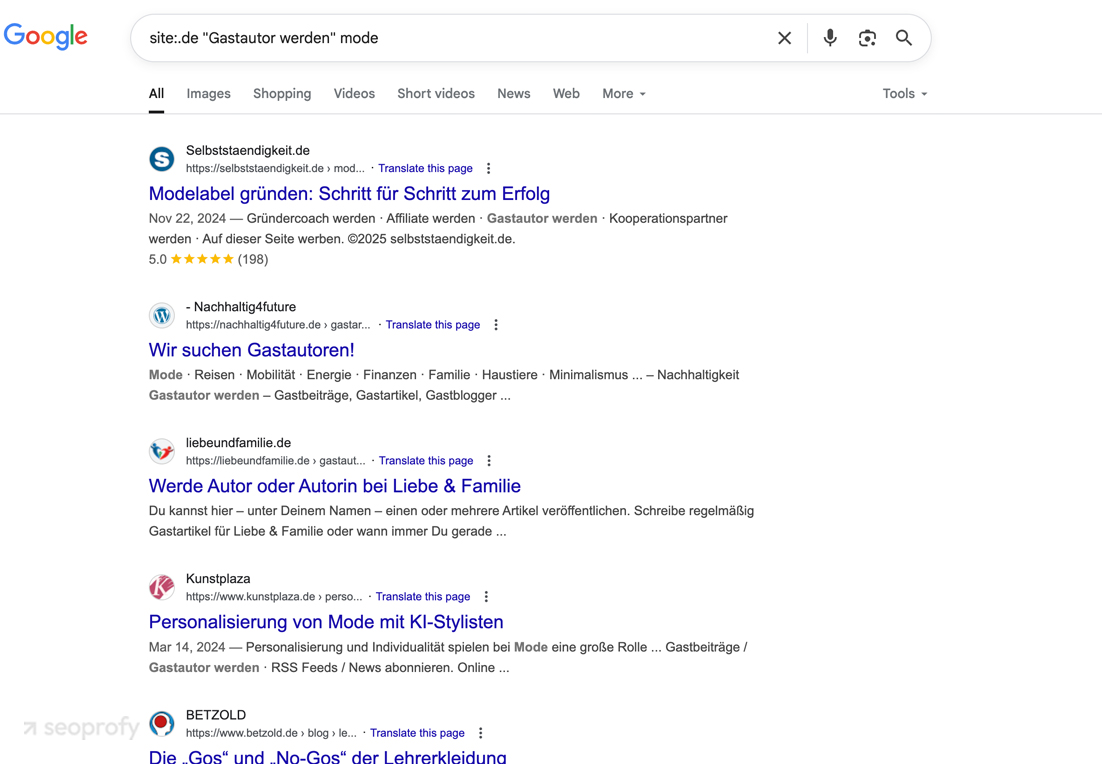
Repurpose Existing Content Across Languages
If a page performs well in English, do not just translate it. Adapt the structure, swap examples, replace stats with local data, and update visuals to match local context. Use tools like Semrush or Google Keyword Planner to find regional search queries and adjust the content to match them. One strong piece can become five linkable assets across different markets.
We build context-rich links in your audience’s language to help you rank, convert, and grow globally.
- SEO signals aligned with local algorithms
- High-quality placements on regional media
- Enhanced trust in target markets
- Tailored outreach for each country

Common Mistakes in Multilingual Link Building (and How to Avoid Them)
In a complex process like international link building, mistakes are hard to avoid. But learning from others can save you time, budget, and nerves. Here are three common errors that often hold teams back (and how to fix them).
Same Outreach for All Languages Is a Red Flag
Using one email template translated into five languages does not work. What sounds neutral in English may feel rude or too casual elsewhere. In Germany, direct and formal works best. In Spain, a friendly opener is expected.
Always adapt tone, structure, and even email length to local expectations. Outreach feels more natural when it follows the norms of the reader, not the sender.
Ignoring Cultural Context Kills Relevance
Content that feels global often ends up feeling like it belongs nowhere. Strong campaigns tap into local habits, humor, or timing.
A great example of link building for multilingual websites is ASUS. On their Japanese blog, they publish content around local events and student initiatives, like the Zenbook SORA campaign in June 2025. The article focuses on Japanese students and includes cultural references and visuals relevant to that market. Meanwhile, their English blog targets global audiences with broader topics like choosing business laptops.
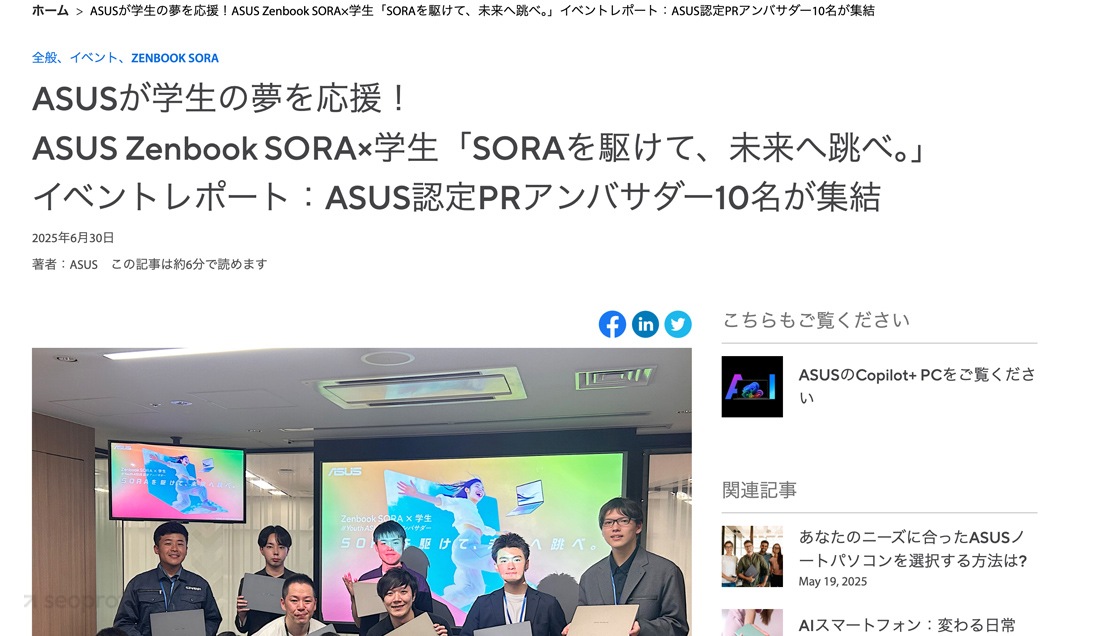
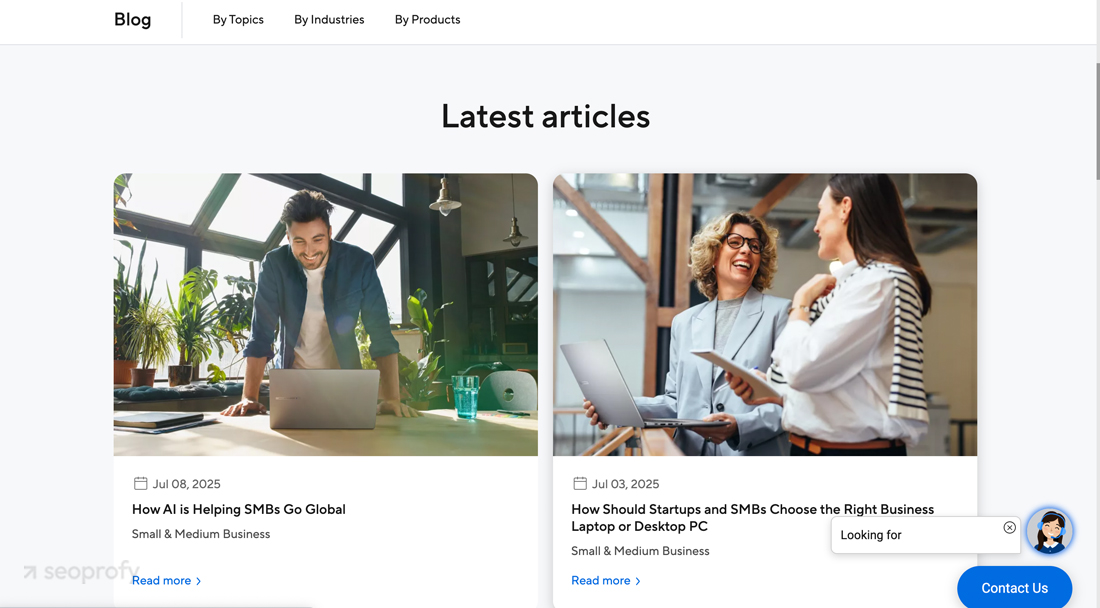
Overlooking Local Link Sources Limits Growth
Global lists rarely include niche communities or country-specific blogs that carry real local influence. That is a missed opportunity. For example, a marketing blog in Poland may have only 5,000 monthly visitors, but if it is trusted and focused, one link from it can drive traffic and improve rankings in Google.pl.
For your multilingual link building strategy, spend time researching regional platforms. Many valuable sites do not show up in global tools unless you filter by country and language.
Tracking and Measuring Your Results
If you’re not tracking, you’re guessing. To improve link building, you need clear metrics for every region.
What to monitor:
- Referring domains by language and market
- Keyword rankings in local SERPs
- Organic traffic by country
- Backlink growth by region
- Anchor text distribution
- Number of local media mentions
- Link velocity per language
Check these monthly and compare them across markets. Double down on what works, and fix what doesn’t.
Our Case Studies and Real Results in Multilingual Link Building
We know how challenging international link building can be. But that is exactly why we enjoy it. The payoff is always worth the effort.
One example. A client in the trading niche came to us with around 1,200 daily visits. After three months of international link building, they reached 4,000 daily visits.
- We focused on Spanish, German, and Polish markets. For each region we:
- Built 90 backlinks from niche and regional blogs
- Used localized anchor text with natural placement
- Created supporting content to match each region’s search intent
Traffic grew first in Spanish, then in Polish and German. Rankings improved for over 30 high-intent keywords in local SERPs. The strategy worked because links were relevant, earned from trusted sites, and supported localized content.
Take Your First Step in Multilingual Link Building
Now you know what it takes to build a multilingual link building campaign — and how layered the process really is. That’s why many brands choose to partner with a team that already knows the ropes.
At SeoProfy, our link building experts work across languages, markets, and industries and create awesome multilingual link building strategies every day. If you’re ready to grow globally, we’re ready to help.

